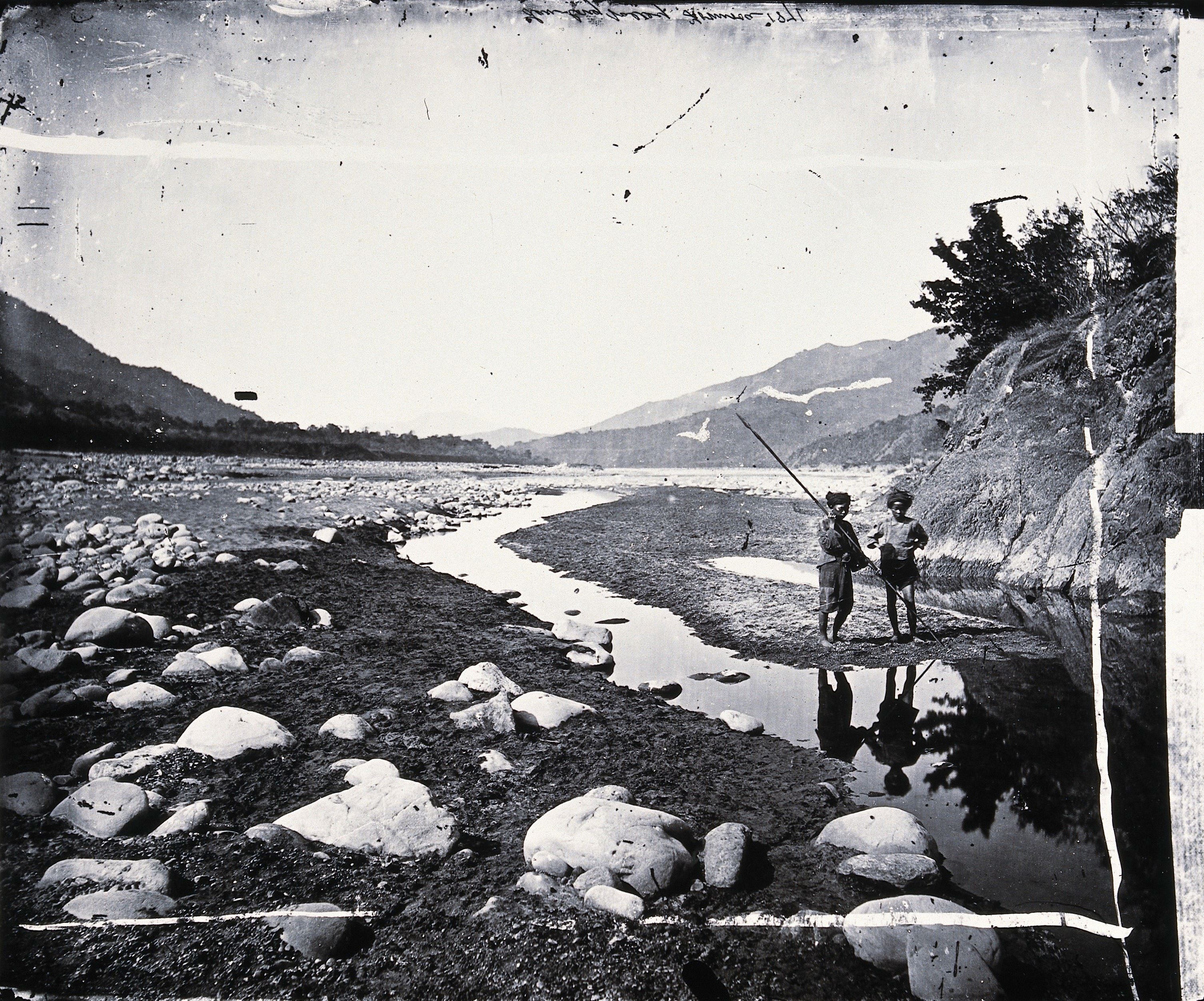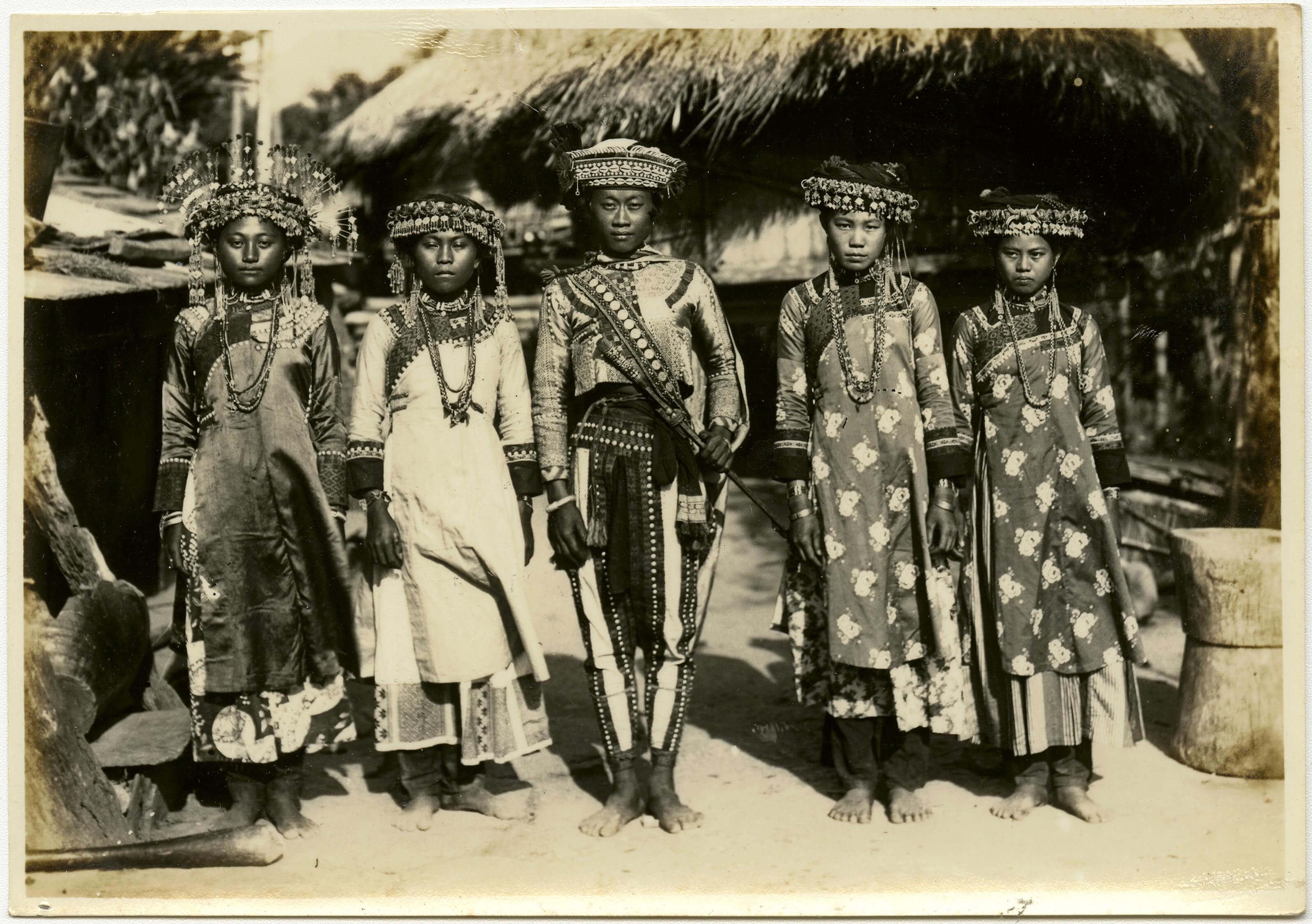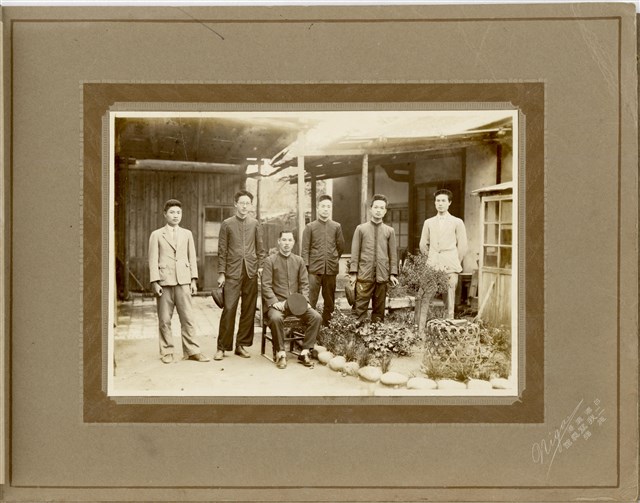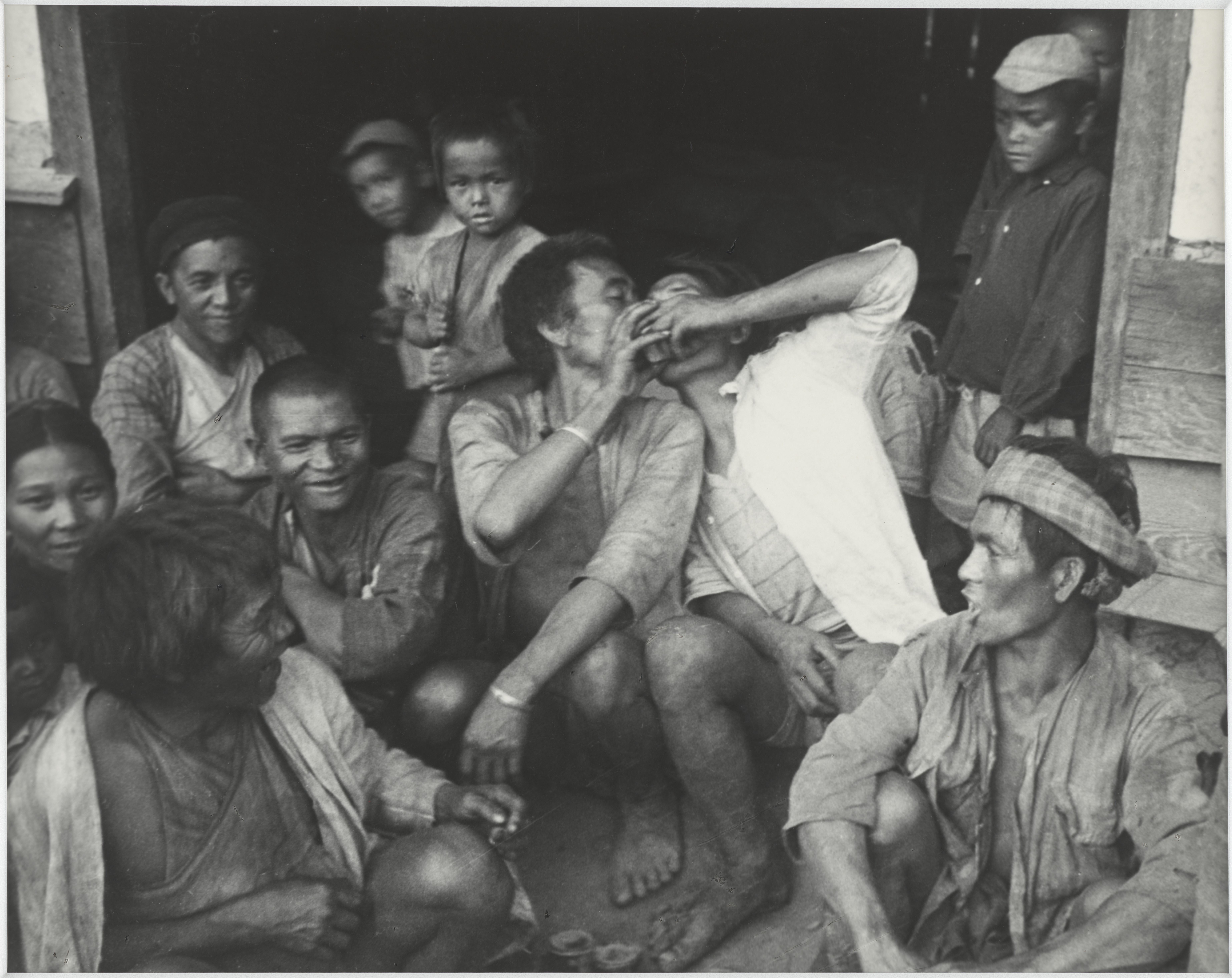-

The Refracted Desire of the Imperial Gaze
The Refracted Desire of the Imperial Gaze
In the mid-19th century, with the development of the technological reproduction of images, photography began with the daguerreotype (1839), the calotype (1841), and then the wet-collodion process. The linguistic roots of the word “photography” mean to “write with light.” In 1860, wet-collodion photography replaced indoor portraits made using daguerreotype. This liberated photography from the restriction of taking place exclusively in an indoor photography studio and allowed for the photographic documentation of architecture, nature, people, and scenes of war. With the invention of the wet-collodion process, the first photo studios outside America, Europe, and Australia were found in Hong Kong, Singapore, Macau, and Manila. Along with earlier processes such as etching and photogravure, photography allowed for the dissemination of images globally. More broadly speaking, the progress of photography was deeply bounded with modernization and the development of colonialism.In the 1860s various western photographers became interested and started to take pictures in Formosa. These included photographic projects by St Julian Hugh Edwards and John Thomson. Their photographs not only represented an external gaze onto Taiwan, but also showed how an empire revealed its desire to the island. These photographers entered Taiwan from Takao (Kaohsiung), Jilong (Keelung), and other ports, including those who had spent years photographing China and Southeast Asia, such as John Thomson. Together with the medical missionary James Laidlaw Maxwell, Thomson visited Lau-long and Baksa taking images of indigenous peoples and the natural environment. 19th century political figures such as Charles W. Le Gendre and William A. Pickering asserted in their writings that making the extension of the imperial military and political power by claiming they owned the knowledge of the area.As such, the images of 19th century Taiwan are marked with colonial power and capitalism. At the same time, because of the expansion of imperial power, there are strong ties between the photographic histories of Taiwan, Southeast Asia and East Asia. What is archived in photographs is the trace of deploying biopower. These photographs provide clues for understanding Taiwan’s history and material culture, particularly regarding the history of Taiwan’s indigenous and the Pingpu tribes. Such photographs serve as a valuable archive for understanding history and therefore to unveil the future.
-

Japanese Colonialism and the Governance of Images
Japanese Colonialism and the Governance of Images
With the commercial success of the gelatin dry plate in the West in the 1870s, the dry plate gradually came to replace the wet plate in photography. This new photographic technology produced a separation between the exposing of film and the developing of photographs. Exposure time was also reduced to around one second. Following the daguerreotype of the 1830s-40s and wet-collodion process of the 1850s-60s, the gelatin silver plate came as a third generation of advances in photographic technologies. A further development was Edward Muybridge’s photographs of movement through fast sequential shuttering, a necessary precondition for the development of his zoopraxiscope, a forerunner to the motion picture. It was with gelatin dry plate photography that George Eastman’s camera company was able to grow. Not only did Eastman’s company hold the patent to the dry plate, but it also invented the film roll in 1894. With the advertising slogan, “You press the button, we do the rest,” Eastman promoted cheap, handheld cameras. This led to his establishment of the Kodak Company in 1892. With the development of the half-tone photographic printing techniques, photographs for the first time began to be extensively used in mass media. For the general public, photography has always been parts of visual expression and memory ever since.Third-generation photography entered Taiwan during the Japanese colonial period. Matsuzaki Shinji took photos of events of military significance, in 1896, Ogawa Kazumasa published Souvenirs de Formose et des Îles Pescadores. The Japanese translated “photography” by inventing a new word “shashin”, literally “writing reality”, which connoted the sinicized aesthetics of portraiture from the Taika Reforms of the 7th century.During the period, state regulation and control of images could be observed in photos, portraits, paintings, postcards, and the official decrees of the Japanese government. These practices were techniques of control that had developed after the Meiji Restoration and had become the ideal method to practice the theory of Datsu-A Ron (Leaving Asia for Europe). We can clearly see how an image of the “colonized” was constructed through the colonial administrative system through the visual governance. Therefore an image also preserved the trace of powers as an archive. In other words, these images offer proof of the existence of the colonized and also provide the return gaze of the colonized subject.
-

Visual Culture From Shashin to hip-siòng
Visual Culture From Shashin to hip-siòng
With the reproducibility of images used as a tool of colonial administration during the Japanese colonial period, the regulation for photographic equipment and material was tightly controlled by the colonial authorities. It was difficult for a native Taiwanese to operate a photo studio. During World War II, photographers had to register with the intelligence agency. This led the everyday use of photography to come under severe restrictions. With the Japanese government seeking to promote immigration, vocational schools that taught photography were set up in Japan and there was a large number of Japanese who set up photo studios in Southeast Asia.The use of techniques for reproducing sounds and images were heavily regulated by Japanese colonial authorities, but this still could not suppress the democratic potentialities of these technologies. Pierre Bourdieu’s ideas are elucidating regarding the notion of “middle-brow art,” regarding how this concept was constructed in the choice of what is photographed, as well as how photography itself can form a social relation, and become a cultural index in observing everyday life. Photo Studios not only document Taiwanese modernization, but also become a social practice of photography as a mid-brow art. In this period, photography became a public sphere with the formation of photography societies and organizations. “Shashin” in Japanese can mean “portrait”, this reflects the close relationship between portraits and photography in Japanese culture. In schools of portraiture, taking portraits and using lighting was a large part of the curriculum. By contrast, the term “hip-siòng” used in Taiwanese dialect was derived from “xi”, meaning to “intake” the image into the machine, just like how the camera does when taking pictures. When Taiwanese set up portrait studios, the standard business included portraits, wedding photos, exterior shots, and group photos. Techniques for using light in darkrooms played an important role in the development of visual culture in Taiwan.Just as the double simulation of colonial images reached its apex, one saw the universalization of photographic equipment, allowing regular people to treat photography as a hobby. Under the refracted colonial gaze, Taiwan’s modernization was documented through photography. But one can also see how Taiwan’s sense of identity gradually transitioned toward its modern liberation through examining photographs from this period.
-

Modernist Photography
Modernist Photography
By 1949, photography in Taiwan had become a specialized professional field. This was not only because portrait studios opened up across Taiwan, but also because a culture of photography was developing among individuals who had studied photography in Japan or elsewhere. Photography’s popularization led in turn to its democratization. Photographic clubs were formed by amateur photographers and professionals alike. A new body of writing on photography not only focused on techniques but also on aesthetic ideas.From the 1920s, with the popularization of 35mm cameras that used rolls of film, gelatin silver prints took over the photographic mainstream, and the portable camera became a tool for capturing social transformation. Photography had now become professionalized and democratized. Images in print media such as newspapers, magazines, and books were now accessible. These developments allow us to understand the first-generation of photographers in Taiwan.Compared to their counterparts in the West or Japan, these early Taiwanese photographers produced pictures that one can compare to the pictorialist photographs of Western 19th-century photography salons. But their images also led to the development of modern photography in Taiwan, both in terms of machine aesthetics and abstraction. Between pictorialism and modernism of photography in Taiwan, identity is asserted through the act of making pictures. As such, the “photo eye” became the “photo I”. The self-consciously creative works of this period went on to ask the classic modernist question, “Who am I?” And from there, the question became, “Who photographs?”, “Who is being photographed?”, and “Why photograph?” In the context of Taiwan, this led to interest in photographs of local character, tradition, and ceremonial gatherings. There is a self-consciousness caught in between modernization and colonialism. In the photography of Peng Ruei-Lin, Chang Tsai, Hong Kong-Da, Deng Nan-Guang, Lee Ming-Tiao and other first-generation photographers in Taiwan, one can observe the subject as the “man with the camera”. These photographers operated in the territory between “observer" and “participant”, and from this “in between” position, they cast their cool gaze upon images of the times.
-

Artist Research
Artist Research
“Hold the Mirror Up to His Gaze” has commissioned 9 artistic research projects to intervene in the exhibition, where they act as supplements. These supplements function like footnotes, branching out as addenda to the exhibition. The nature of art research is its non-replicability. It must emphasize the integration of exhibition, research, and heuristic processes, in addition to the epistemology that is born within. Each invited artist has proposed a specific theme by which to intervene into the exhibition and form open-ended discourses.